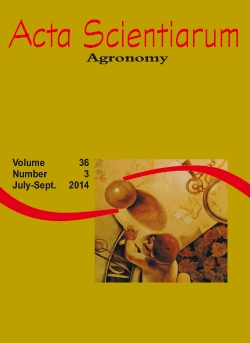<b>Leaf-level carbon isotope discrimination and its relationship with yield components as a tool for cotton phenotyping in unfavorable conditions
Abstract
The initial goal of this study was to measure the efficiency of carbon isotope discrimination (Δ) in distinguishing between cotton plant genotypes subjected to two water regimes. In addition, ∆ measurements, leaf water potential and gas exchange ratios were monitored. Using Brazilian breeding lines, this study also tested the usability of ∆ as a proxy for selecting high-performing yield components in cotton plants grown in unfavorable conditions, particularly water deficiency. For these experiments, ∆ and yield components were measured and their correlations analyzed. Differences among cotton genotypes for Δ (p < 0.0001) were verified, and it was found that this variable was significantly correlated with gas exchange. There was a significant positive correlation between Δ and seed cotton yield only in the site experiencing severe water deficiency (Santa Helena de Goiás). However, Δ had a significant negative correlation with fiber percentage. Our results indicate that Δ is a suitable tool for cotton phenotyping, and it may be applied in cotton breeding programs that aim to produce high-performing yield components in unfavorable conditions.
Downloads
DECLARATION OF ORIGINALITY AND COPYRIGHTS
I Declare that current article is original and has not been submitted for publication, in part or in whole, to any other national or international journal.
The copyrights belong exclusively to the authors. Published content is licensed under Creative Commons Attribution 4.0 (CC BY 4.0) guidelines, which allows sharing (copy and distribution of the material in any medium or format) and adaptation (remix, transform, and build upon the material) for any purpose, even commercially, under the terms of attribution.




















































